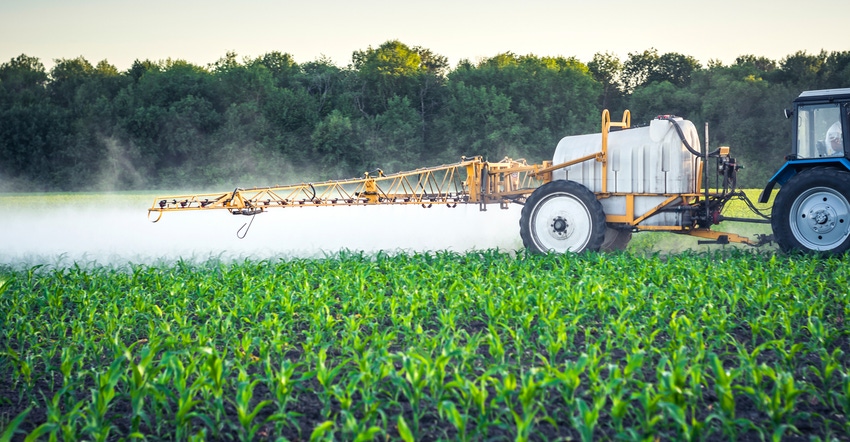July 5, 2019

There are a few issues surrounding weed control and herbicide use that should be considered as growing season proceeds.
Penn State Extension has been receiving calls about weeds breaking through soil-applied herbicides. With all of the recent rainfall, and especially if reduced herbicide rates were used, a postemergence herbicide may be necessary to clean up some of the escaped weeds. However, keep in mind there are crop height restrictions on many of the post herbicides.
For a listing of additional herbicides and maximum corn heights, and for information on maximum weed sizes for these products, refer to Table 2.2-15 in the Penn State Agronomy Guide and check the most recent herbicide label for specific use guidelines.
For the best results when applying postemergence herbicides, follow these three steps:
1. Wait for sunshine. The past few weeks have been rainy and cloudy, and July is destined to bring some hot and humid weather. There is potential for crop injury when post herbicides are applied.
The general rule of thumb is to allow a couple of sunny days or so to pass after coming out of a rainy, overcast period before applying herbicides. Since the plants are stressed, this allows them time to build up a thicker leaf surface and to get their metabolic processes functioning at a faster pace to detoxify the herbicide.
Also, with all the moisture and sunlight, the plants will be growing very quickly and are succulent, so consider using nonionic surfactant instead of crop oil concentrate or methylated seed oil as the spray additive. Keep in mind, too, that certain pesticide formulations can increase crop injury.
When overcast, rainy days persist, there is a temptation to put “everything” in the tank at once (other pesticides, various adjuvants, foliar fertilizers) to reduce the number of trips across the field. But this can cause serious crop injury since the plants are sensitive and can’t fully metabolize and handle all of the products at once.
2. Use proper nozzles. Certain herbicides, especially glyphosate and the PGR herbicides (dicamba, 2,4-D) can cause problems outside the field boundaries.
To help reduce drift, use drift-reducing nozzles such as venturi or air-induction style tips. Most manufacturers make these tips as extended-range models to reduce the spray pressure down to 15 psi.
Also, consider the difference between particle drift and vapor drift. Particle drift occurs when small droplets move and deposit onto leaf surfaces. This can be prevented by choice of nozzle, pressure, spray volume and application time. Vapor drift is related to the function of the herbicide formulation, and it does not matter what kind of tip or pressure is used. Vapor drift is affected by temperature and relative humidity.
For a more detailed discussion on spray drift and ways to reduce it, see "Reduced Spray Drift from Glyphosate and Growth Regulator Herbicide Drift Caution" from Purdue University.
Keep in mind, though, that if using herbicides that require good spray coverage (Liberty, Gramoxone, Cadet, Cobra, Reflex) air-induction tips may not be the best option unless certain adjustments are made to allow for better coverage, including higher spray volume, pressure and boom height.
3. Clean out the sprayer. Proper sprayer cleanout is important, especially when moving from one crop to another.
There are still many reports of PGR herbicide injury on soybeans when applicators don’t properly clean out the sprayer after a corn (or Xtend soybean) application. Dicamba residues left in the sprayer still pose one of the biggest threats to non-Xtend soybeans, and certain vegetables, when not thoroughly cleaned out.
Dicamba-containing products include Banvel, Clarity, DiFlexx, XtendiMax, Engenia, FeXapan, Sterling, Status, Yukon and others.
To get the most effective sprayer cleanout, simply rinsing with water will not work, especially with plastic tanks and rubber hoses. Usually it requires a few steps with inclusion of ammonia or tank cleaner.
For more details on sprayer cleanout and risks with certain hose types, see "Removing Dicamba Residues from Your Sprayer: A Tricky Task" from the University of Nebraska-Lincoln Cropwatch website.
Source: Penn State University, which is solely responsible for the information provided and is wholly owned by the source. Informa Business Media and all its subsidiaries are not responsible for any of the content contained in this information asset.
You May Also Like




